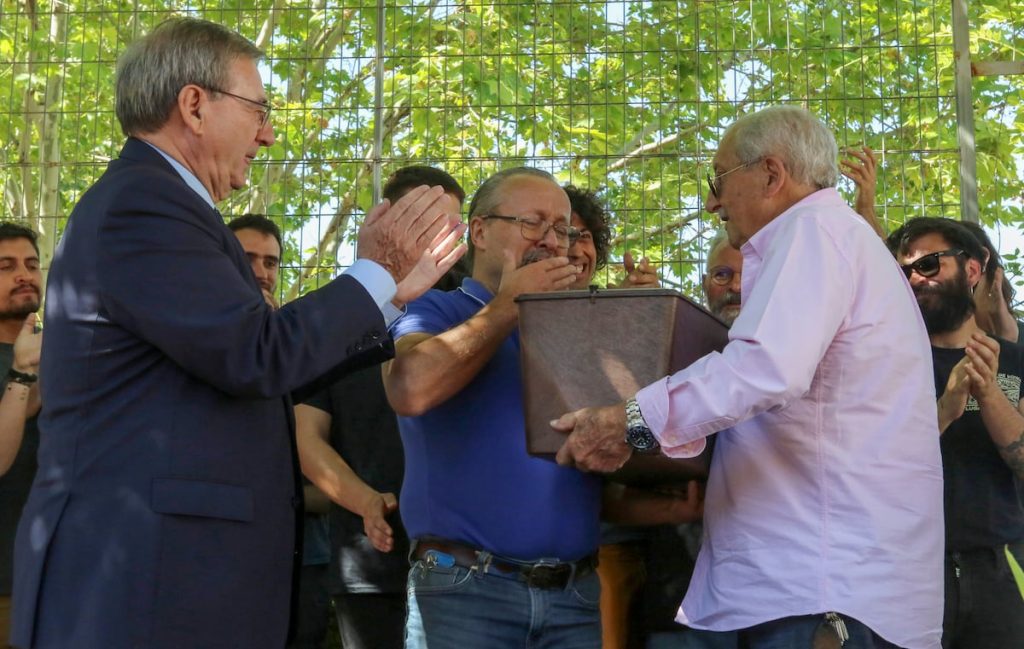Miguel Rosales lost his father, Antonio, on the night of August 24, 1936, when he was shot in the Barranco de Víznar (Granada). A few months later, Miguel, the grandson of the victim, was forced to join the Francoist side in the war. The authorities claimed that Antonio was not dead. “He is missing,” they said, as remembered by Miguel, also named after his father. In January 1937, the son of the victim also joined the war. He wrote in his diary later: “I wish to hear a confession from the one who left me without a father.” Nobody did, and no one apologized to him or the thousands who underwent the same ordeal. Nearly 88 years later, two families have found some peace. The grandsons of Antonio and Juan de Dios Adarve, who was also shot in the same location, have received the remains of their grandfathers, exhumed from the ravine and identified through DNA matching.
Juan de Dios Adarve López and Antonio Rosales Ruiz are the first two people identified from the 132 bodies exhumed from the Barranco de Víznar, found in 18 mass graves. Since 2021, a team of researchers from the University of Granada has been conducting excavations and exhumations at the site. Until now, only two have been identified through DNA comparison with a genetic database of individuals who believe their relatives were shot at the location. On Saturday, the Secretary of State for Democratic Memory, Fernando Martínez, and forensic anthropologist Laura Gutiérrez handed over the remains of their relative to the grandsons. Antonio Rosales Ruiz, a nurse at the San Juan de Dios hospital, was shot on the night of August 24, 1936. He was falsely accused of various crimes and executed alongside four other nurses from the same hospital. His grandson, Miguel, returned to Granada three decades ago, and along with his cousin Mario, decided to bury their grandfather in the Víznar cemetery.
The story of Juan de Dios Adarve reflects a man with social consciousness. He worked as a clerk at a factory in El Fargue and was involved in various associations supporting workers in his area. Accused of leading a rebellion, he was arrested and shot at the Barranco de Víznar on August 25, 1936. His sister, Trinidad, still hopes for the identification of her brother, one of the remaining bodies to be identified. Francisco Carrión, the lead researcher at the Barranco de Víznar project, estimates that around 200 people were killed at the site. The Franco regime tried to hide the mass graves by reforesting the area, but thanks to the efforts of Carrión’s team, 18 mass graves have been discovered, and more bodies will be recovered in the upcoming excavations.
The work of recovery and identification at the Barranco de Víznar serves the purpose of repairing the repression suffered by the losing side of the war. While acknowledging that both sides experienced violence and repression, the Secretary of State for Democratic Memory emphasized the need to dignify and recognize the victims of the Republican side, who have been marginalized and forgotten in mass graves. The efforts in the field of Democratic Memory aim to bring justice and closure to the families of the victims who were unjustly persecuted and killed during the Spanish Civil War.


